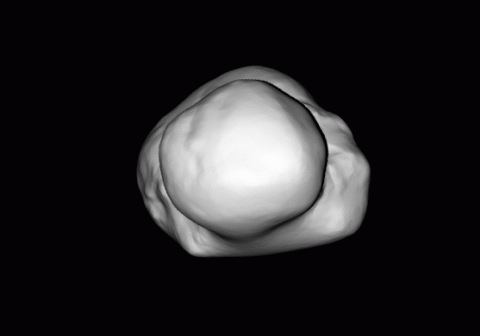Written by Tony Phillips
Science at NASA
 Washington, D.C. – As the European Space Agency’s Rosetta probe approaches Comet 67P/Churyumov-Gerasimenko (67P) for an August rendezvous, the comet’s core is coming into sharper focus. On Thursday, July 24th, ESA released a new set of images and a striking 3D model of 67P’s nucleus.
Washington, D.C. – As the European Space Agency’s Rosetta probe approaches Comet 67P/Churyumov-Gerasimenko (67P) for an August rendezvous, the comet’s core is coming into sharper focus. On Thursday, July 24th, ESA released a new set of images and a striking 3D model of 67P’s nucleus.
The resolution of the latest images taken by the spacecraft’s OSIRIS imaging system on July 20th is 330 feet (100 meters) per pixel. At that resolution, 67P appears to consist of two parts: a smaller head connected to a larger body. The connecting region, the neck, is proving to be especially intriguing.

This collar-like appearance could be caused by differences in material or grain size, or could be a topographical effect–no one knows.
The appearance of 67P reminds mission scientists of comet 103P/Hartley, which was visited in a flyby by NASA’s EPOXI mission in 2010. While Hartley’s ends show a rather rough surface, its middle is much smoother.

Scientists believe this waist to be a “gravitational low.” Because it contains the body’s center of mass, material kicked up by, say, meteoroid impacts, that cannot leave the comet’s gravitational field is most likely to be re-deposited there.
These can select several wavelength regions from the reflected light, allowing scientists to identify the fingerprints of certain materials and compositional features.
Rosetta will be the first mission in history to rendezvous with a comet, escort it as it orbits the sun, and deploy a lander to its surface. ESA says the next high-resolution OSIRIS image will be published on July 31st. Stay tuned!
Web Links
European Space Agency home page
Rosetta — from the ESA
Rosetta — from NASA
Rosetta Comet Comes Alive — from Science@NASA


